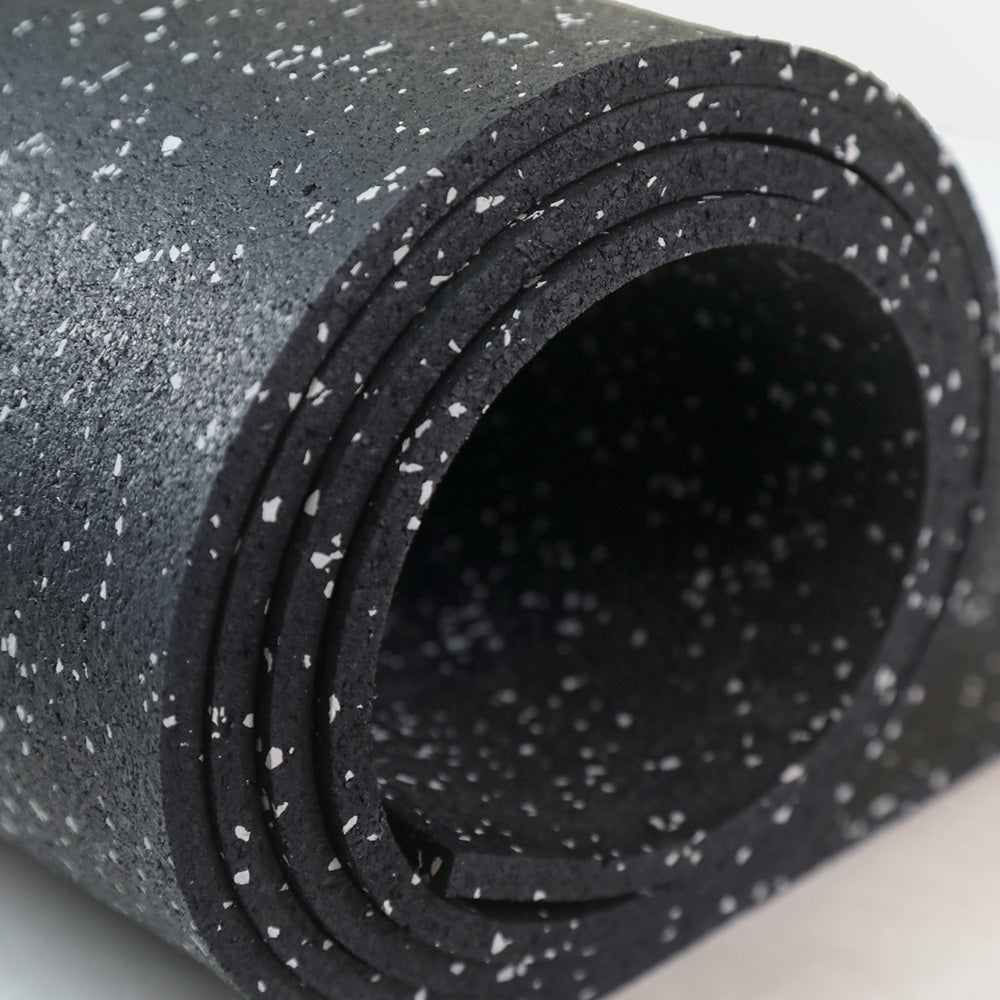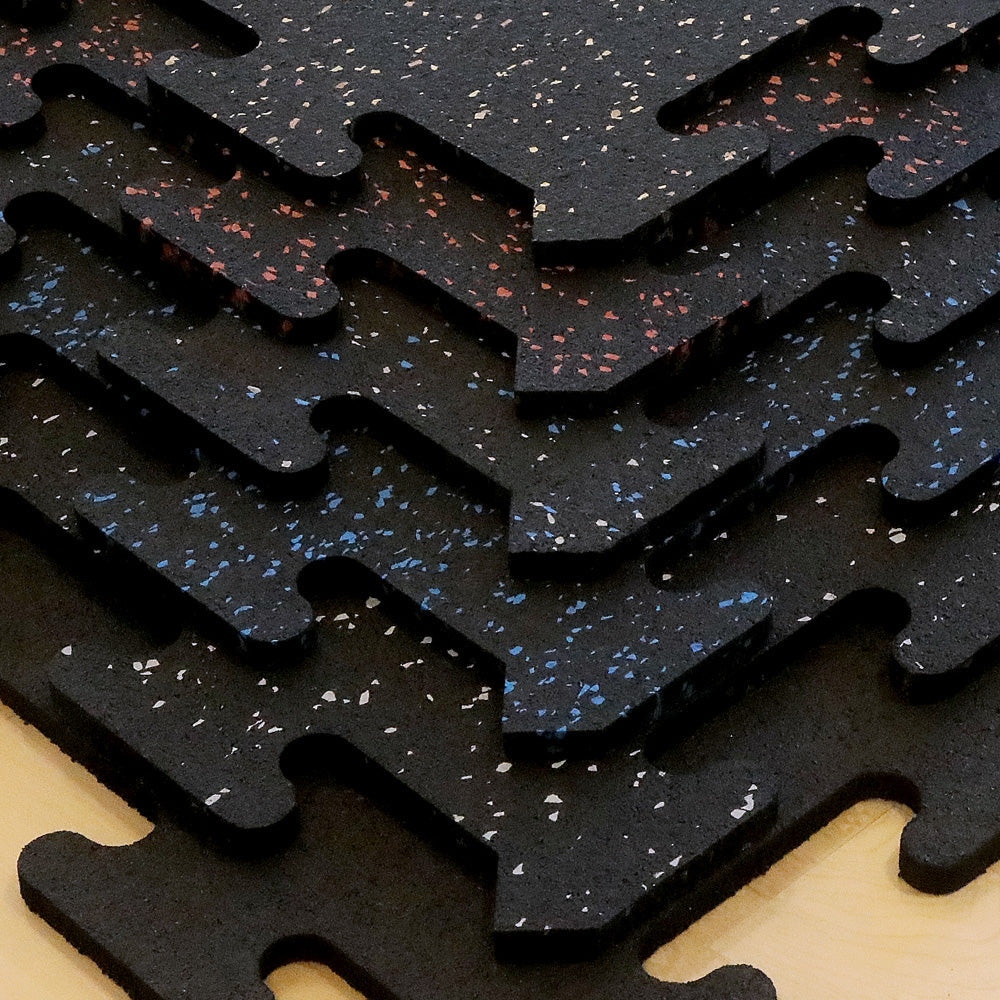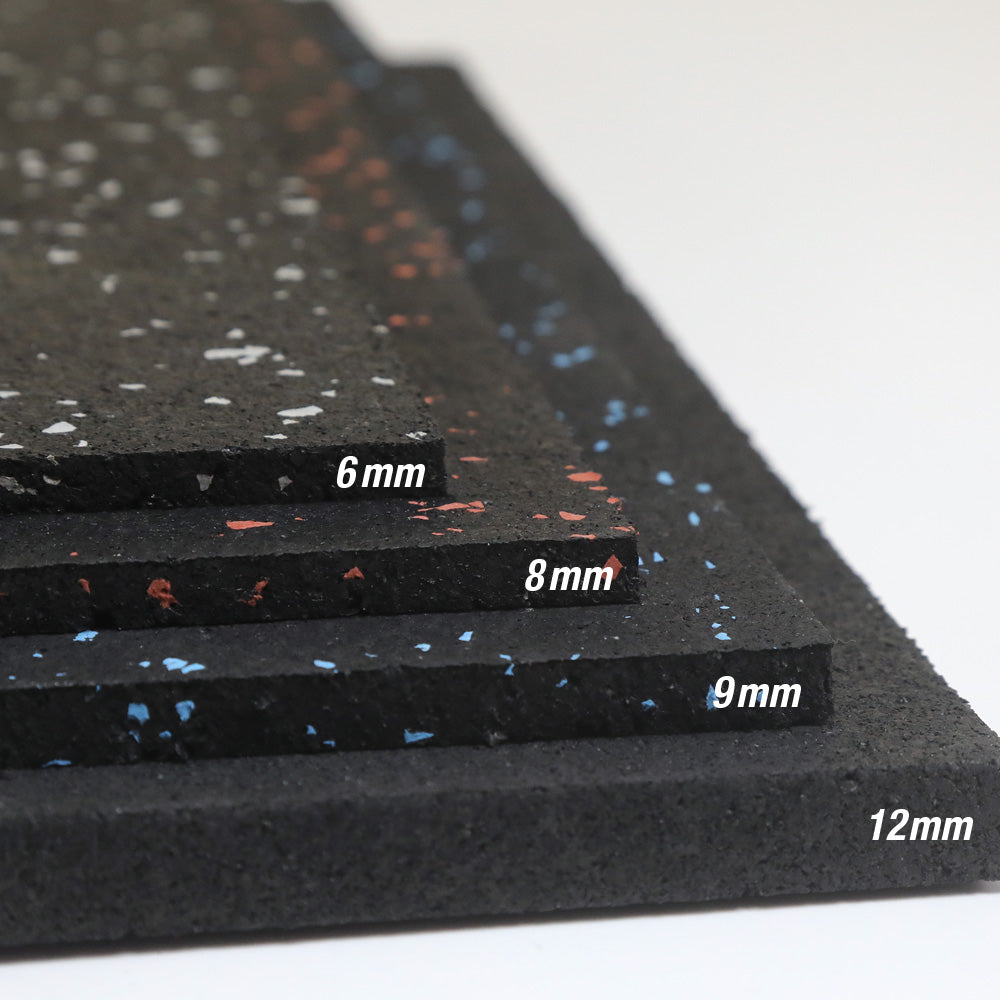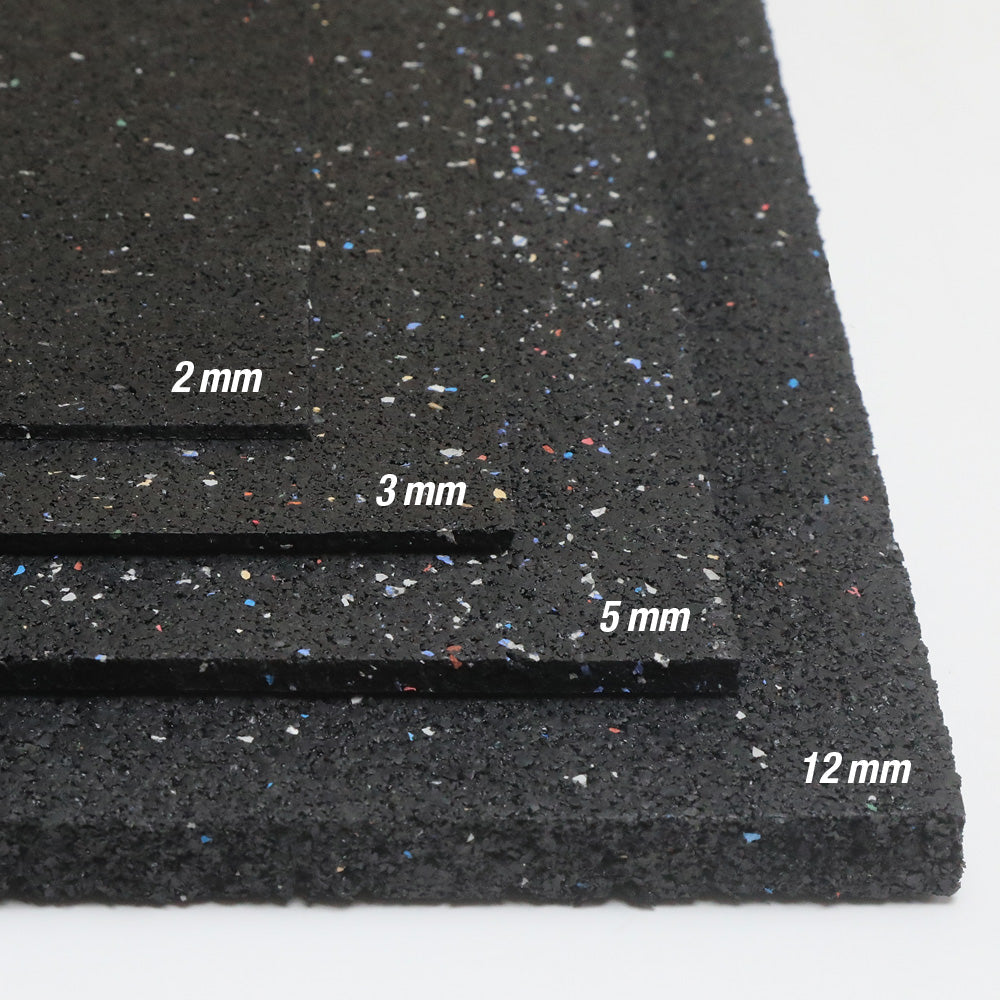
 5/16" (8mm) Rubber Tiles - 24" x 24"From $8.64 /tileFrom $8.64 /tile
5/16" (8mm) Rubber Tiles - 24" x 24"From $8.64 /tileFrom $8.64 /tile
 1/4" (6mm) Rubber Tiles - 24" x 24"From $5.92 /tileFrom $5.92 /tile
1/4" (6mm) Rubber Tiles - 24" x 24"From $5.92 /tileFrom $5.92 /tile
 3/8" (9mm) Rubber Tiles - 24" x 24"From $8.72 /tileFrom $8.72 /tile
3/8" (9mm) Rubber Tiles - 24" x 24"From $8.72 /tileFrom $8.72 /tile
 1/2" (12mm) Rubber Tiles - 24" x 24"From $12.96 /tileFrom $12.96 /tile
1/2" (12mm) Rubber Tiles - 24" x 24"From $12.96 /tileFrom $12.96 /tile
 5/16" (8mm) Rubber Tiles - 18" x 18"From $5.36 /tileFrom $5.36 /tile
5/16" (8mm) Rubber Tiles - 18" x 18"From $5.36 /tileFrom $5.36 /tile
 1/4" (6mm) Rubber Tiles - 18" x 18"From $3.69 /tileFrom $3.69 /tile
1/4" (6mm) Rubber Tiles - 18" x 18"From $3.69 /tileFrom $3.69 /tile
 3/8" (9mm) Rubber Tiles - 18" x 18"From $6.07 /tileFrom $6.07 /tile
3/8" (9mm) Rubber Tiles - 18" x 18"From $6.07 /tileFrom $6.07 /tile
 1/2" (12mm) Rubber Tiles - 18" x 18"From $7.88 /tileFrom $7.88 /tile
1/2" (12mm) Rubber Tiles - 18" x 18"From $7.88 /tileFrom $7.88 /tile
RFS Recycled Rubber Tiles are an incredibly versatile and durable product that offers an easy DIY solution for installing rubber flooring. Ideal for irregular shaped spaces or for temporary installations, rubber tiles feature precision-cut interlocking tabs for ultra-fast assembly.
Recycled rubber tiles are environmentally-friendly and made from repurposed vehicle tires. They are available in two different sizes and all of the same thicknesses as RFS rubber rolls.
Common Applications for Recycled Rubber Tile Flooring
RFS offers two different tile sizes in multiple thicknesses and colors. Our 24”x24” interlocking rubber tile provides four square feet of coverage and is commonly used for home gyms, garages, workshops and kid’s playrooms. Our 18”x18” interlocking rubber tiles include edging for a clean finished perimeter. These tiles are used for smaller, dedicated applications such as anti-fatigue flooring, equipment protection flooring or exercise flooring for individual use.
Home gyms: Rubber gym tiles that are 6mm (1/4”) or 8mm (5/16”) thick are typically used for personal fitness spaces like Pilates or yoga and low to moderate weight training. Other common flooring applications include: laundry rooms, basements, garages, and kid’s playrooms.
• RFS 1/4” (6mm) Rubber Tiles – 24”x24”
• RFS 1/4” (6mm) Rubber Tiles – 18”x18”
• RFS 5/16” (8mm) Rubber Tiles – 24”x24”
• RFS 5/16” (8mm) Rubber Tiles – 18”x18”
Commercial gyms: Rubber gym tiles that are 9mm (3/8”) thick are widely used in smaller commercial gyms, exercise rooms, fitness, and health clubs. These tiles are made to handle heavy equipment and high foot traffic for the most demanding environments. Other common flooring applications include: home gyms, industrial areas, schools and doggy daycare facilities.
• RFS 3/8” (9mm) Rubber Tiles – 24” x 24”
• RFS 3/8” (9mm) Rubber Tiles – 18” x 18”
Powerlifting/Cross training environments: Rubber gym tiles that are 12mm (1/2”) thick are required for maximum subfloor protection from extra-heavy weight impact. Our thickest rubber gym tile flooring provides superior comfort for high-intensity cross training. Other common flooring applications include: CrossFit gyms, garage gyms, tradeshow flooring and pet care facilities.
• RFS 1/2” (12mm) Rubber Tiles – 24” x 24”
• RFS 1/2” (12mm) Rubber Tiles – 18” x 18”
Pros and Cons of Recycled Rubber Tiles
Recycled Rubber Tiles combine the benefits of incredible durability, slip-resistance and shock absorption with the ease of installation and convenience of portability. Rubber tiles, however, can potentially shift from heavy equipment and trap dirt in multiple seams across the floor.
Pros of Recycled Rubber Tiles
Durable & resilient: Made from recycled rubber tires, this long-lasting material is known for withstanding incredible wear and repetitive use.
Exceptional shock absorption: Dense rubber material cushions impacts from dropped weights to protect your subfloor, provides underfoot comfort, and reduces injury risk.
Slip-resistant: The unique surface texture of recycled rubber provides a non-slip grip and is slip-resistant when wet. Rubber tiles will help prevent slips and falls in your space.
Sound & vibration dampening: Recycled rubber is excellent at dampening noise and vibration from dropped weights or workout equipment. The dense rubber also helps reduce footfall and airborne noise between rooms.
Water- & mold/mildew-resistant: Recycled rubber does not absorb water and is naturally resistant to mold and mildew. Its water-resistant properties make rubber tiles and excellent choice for areas prone to dampness, such as gyms, basements and outdoor spaces.
Eco-friendly: Rubber tiles are made from recycled tires, which reduces landfill waste and promotes sustainability. Recycled rubber tiles can also be recycled at the end of its life.
Easy to install: Interlocking “puzzle piece” design allows for lightning fast, DIY installation. Individual tiles can also be replaced if damaged or worn.
Aesthetically versatile: Rubber tiles are available in various colors and can be used interchangeably to create different floor designs.
Low maintenance: Rubber flooring is easy to clean. Simply vacuum, mop the floor with a pH-neutral cleaner and allow the rubber to air dry.
Cons of Recycled Rubber Tiles
Visible seams: The shape of interlocking rubber tiles create more visible seams that can collect dirt and debris over time.
Vulnerable to heavy loads: Recycled rubber tiles have more seams, which can separate when subject to heavy loads or shift when moving equipment. Uneven seams can create tripping hazards. Double-sided adhesive tape can help secure rubber tiles to the subfloor.
Vulnerable to oil and UV: Although recycled rubber tiles can be used in outdoor spaces – including garages – auto fluids, oil and grease can stain or damage the rubber. Color flecks can fade over time when exposed to direct sunlight.
Higher upfront cost: Rubber tiles are more expensive per square foot than rubber rolls due to their modularity and tile manufacturing process. The DIY nature of rubber tiles can help homeowners offset the upfront cost by installing the tiles themselves and reducing trim waste.
Recycled Rubber Rolls -vs- Recycled Rubber Tiles
Recycled rubber flooring from RFS is available in rubber rolls or rubber tiles. When choosing the best rubber flooring for your space, it is helpful to understand the primary differences between rolls and tiles before making your selection.
For a more in-depth review of rubber flooring options, read our Rubber 101 article on Rubber Rolls or Rubber Tiles?
Comparison of Rolls vs Tiles
Here is a helpful comparison chart to understand the primary differences between rolls and tiles before making your selection.
Recycled Rubber Tile Thicknesses
Recycled Rubber Tiles from RFS are available in a variety of thicknesses. The rubber thickness you select for your space is one of the most important decisions for protecting your subfloor and matching the rubber durability to your specific activity.
6mm (1/4”) – Commonly used for home gyms where flexibility/body weight exercises and lightweight equipment is primarily used. Not recommended for use with moderate to heavy weights.
8mm (5/16”) – Most popular thickness for home gyms and suitable for moderate weight impact (10-45 lbs). Not recommended for use with heavy weights.
9mm (3/8”) – Provides greater floor protection from heavy weights (45-75 lbs). Commonly used in commercial gyms, fitness centers and CrossFit rooms.
12mm (1/2”) – Maximum durability and protection from extra-heavy weights (75-100 lbs) and extreme fitness programs such as powerlifting, barbell complexes and CrossFit.
For a more complete review of RFS rubber thicknesses, check out our Rubber 101 article on Choosing Your Rubber Thickness.
Rubber Tile Flooring Installation
Installing rubber gym tiles is not difficult. This DIY installation is as easy as locking the tile pieces together and making simple trim cuts for fit around obstacles or wall edges. Most installations can be completed with a carpet/utility knife, straight edge and tape measure. For larger rooms, a rubber mallet or gloves should be used to protect your hands from the rubber texture.
Depending on your rubber flooring performance needs and space, there are three primary installation options to consider:
Loose Lay Installation
This is the easiest method to install rubber tile flooring. Tiles are positioned on the subfloor and connected together with the locking tabs. The weight of the rubber tiles typically keeps the floating floor in place. No tape or adhesive products are used. There are two loose lay methods to consider for installing tiles:
• Wall-to-wall: For rooms that are true and square, rubber tiles can be placed from wall to wall starting in one corner. Tiles are then connected to the corner tile in rows and columns until all the tiles are placed in the room. The locking tabs on corner and room perimeter tiles will need to be trimmed if a straight border is desired.
• Center-to-wall: For rooms that do not have 90-degree corners or are irregular shaped, tiles can be placed from the center of the room. This is found by locating the centers of each wall and creating chalk lines on the subfloor to create a grid. Position the first tile at the intersection of the chalk lines and proceed to work outward toward a wall. Trim the last tile closest to the wall for a straight edge. Depending on the size of your room, this method may require more custom cuts around the perimeter of the room but will result in a more symmetrical seam pattern across the entire room.
Loose lay installations are ideal for temporary flooring, smaller spaces, or when you need to move the flooring later. This form of installation is not recommended for high-traffic areas or where the rubber needs to remain perfectly flat at all times.
Double-sided Adhesive Tape Installation
This cost-effective method is an easy way to provide extra stability to your rubber tile flooring where a more permanent bond is not required. Double-sided adhesive tape is used around the perimeter of the room and under edges of the tiles. Adhesive tape provides more security than loose laying and is still removable.
Polyurethane Adhesive Installation
For permanent installations, the use of a special polyurethane adhesive is used to bond the rubber flooring to the subfloor. This method requires applying the adhesive to sections of the subfloor using a notched trowel and laying the rubber into the wet adhesive. A heavy roller is used over the rubber to ensure full contact and proper adhesion. Due to the complexity of this installation option, a professional installer is highly recommended. Permanent installations are most commonly used in high-traffic commercial spaces.
How to Install Rubber Tile Flooring
How to Clean Rubber Flooring
The easiest part about adding rubber flooring to your space is the cleaning and maintenance!
Recycled rubber flooring is extremely durable and does not require a lot of maintenance once it is installed. Routine cleaning is as simple as using a vacuum and a damp mop.
Follow these general steps for keeping your rubber flooring in top shape:
Vacuum the floor: Use an upright vacuum to remove loose dirt, dust and debris from the rubber surface. Adjust the vacuum brush height so it does not scratch the rubber.
Mop the floor: Use a pH-neutral floor cleaner with warm water to wash and sanitize the rubber.
Apply the cleaning solution using a microfiber mop. Avoid applying too much liquid as excessive moisture can seep into the seams and saturate the subfloor. Depending on the floor cleaner, such as mild dish soap, you may need to rinse the floor thoroughly with a clean mop and plain water to remove any residue.
Air dry the floor: Allow the rubber flooring to air dry completely before walking on it. Open windows/doors in the room to help circulate air or use a box fan to promote air flow.
Additional cleaning tips to keep in mind for maintaining your rubber flooring:
Avoid harsh cleaners: Never use acidic (vinegar or lemon juice), alkaline (ammonia or bleach), oil-based products (Pine-Sol, Murphy’s Oil Soap, WD40) or abrasive tools (steel wool or scouring pads) on rubber. These products can damage the rubber flooring over time.
Spot clean tough stains immediately: Use a soft nylon scrub brush or microfiber cloth to clean the stain on the rubber surface. A mild dish soap and warm water mixture may be all that is required to work the stain free.
Never saturate rubber flooring: Avoid using excessive cleaning solution on your floor. Liquid can seep through the seams and damage the subfloor. Wooden subfloors can swell and potentially rot. This can lead to harmful mold growth.
Check out our Rubber 101 article Is Rubber Flooring Easy to Clean? for more cleaning tips.
Popular Collections
- Your collection's name

Rubber Flooring Rolls
- Your collection's name

Rubber Floor Tiles
- Your collection's name

Rubber Gym Mats
- Your collection's name

Rubber Underlayment
-
Great Customer Service
I reached out to them and I spoke to Jay. He was great! I didn't know what I should get for my extra room we wanted to turn into a workout area and he helped me out. We are very happy with how everything turned out.
-
Very Happy
This product delivered exceptional value for our outdoor gym. The superior quality and impressive results justified the purchase, and the remarkably fast shipping was an unexpected bonus. A key factor in our satisfaction was finding rolls of this length at such a competitive price, which was crucial for completing our project without exceeding our budget. This product provided an ideal solution.
-
Easy to Install and looks Great
We love this rubber flooring! It was super easy to install and instantly gave our space a smooth, clean look. It's great because it keeps the cold from the concrete off your feet. The initial rubber smell was gone in just a day. It's also easy to keep clean, making it a smart and valuable choice for us.
Blog posts
-
Read more
Ensure a long-lasting, professional rubber gym floor. Learn how to properly acclimate recycled rubber flooring with expert tips from RFS – Rubber Flooring Store.
-
Read more
Installing rubber flooring? Rubber Flooring Store explains how to prepare concrete, wood, and carpet subfloors for the best results. Avoid moisture, uneven floors, and installation mistakes with these expert tips.
-
Read more
RFS explains how 5-foot rubber rolls boost efficiency, reduce seams, and deliver a premium finish for your flooring project.























